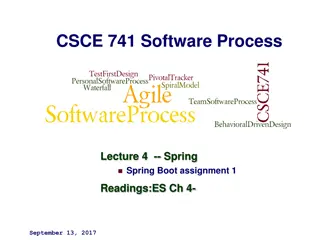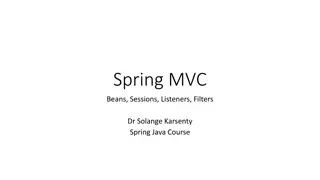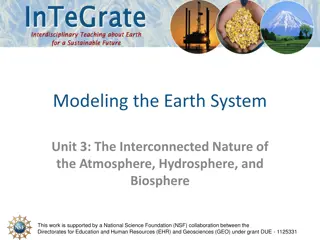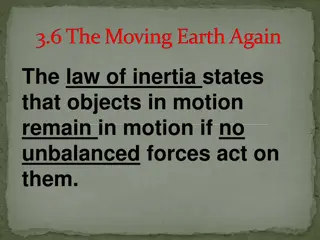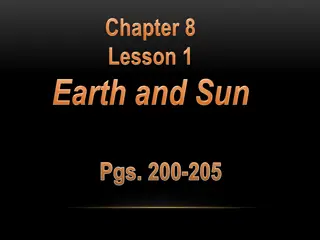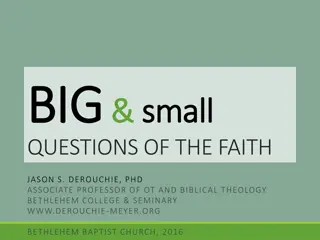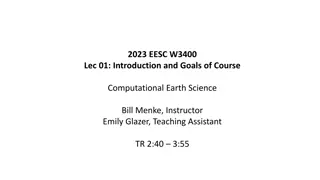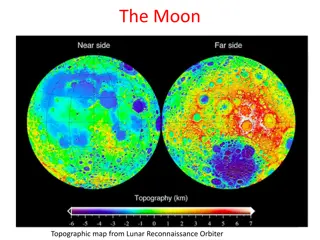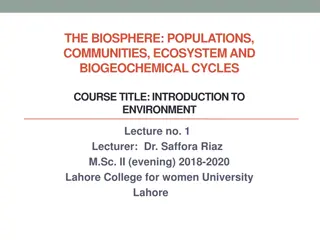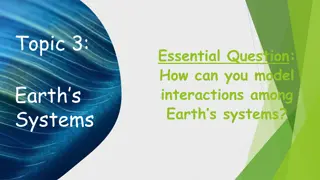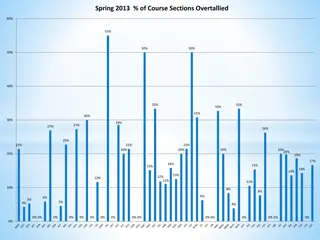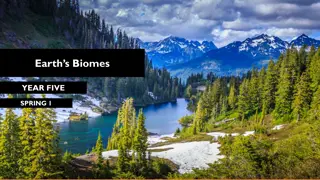Introduction to Earth Systems in GEO101 Spring 2023
Explore the fundamental concepts of Earth systems in GEO101 Spring 2023, covering the components, linkages, states, and examples of systems such as Atmosphere, Lithosphere, Hydrosphere, and Biosphere. Gain insight into the interconnections and dynamics of these systems to understand the complexity of Earth's natural realms.
Download Presentation

Please find below an Image/Link to download the presentation.
The content on the website is provided AS IS for your information and personal use only. It may not be sold, licensed, or shared on other websites without obtaining consent from the author. Download presentation by click this link. If you encounter any issues during the download, it is possible that the publisher has removed the file from their server.
E N D
Presentation Transcript
Introductions to systems GEO101 Spring 2023
Contents Systems Earth systems Feedback systems Equilibrium states Example
What is a system? Earth is big and complex! make it simpler first components, then linkages systems models Earth as a system.
The Four Great Realms The natural systems studied in physical geography operate within the four great realms: Atmosphere Lithosphere Hydrosphere Biosphere
Atmosphere The gaseous layer that surrounds the earth. Receives heat and moisture from the surface and redistributes them, returning some heat and all of the moisture to the surface. Supplies vital elements to support all life forms.
Lithosphere The solid portion of the earth. Is sculpted into landforms, such as mountains, hills, and valleys Has a thin layer of soil covering solid rock (see also Biosphere).
Hydrosphere Liquid water. Most water is in the oceans. Water is also found in the atmosphere in all phases (liquid, solid, gas), and on the lithosphere as lakes, streams, groundwater and ice.
Biosphere Includes all living organisms of the Earth Is dependent upon the other three layers to support life. These layers interact with each other in the life layer at the surface of the earth.
Components components are distinct objects (this definition differs from the Text s) e.g. a nose
States: components have varying states e.g. nose can be warm or cold Linkages: systems require them. linkage occurs because a component state respond to another. e.g. if nose is cold, then body pumps more blood to warm it. Perturbations disturb the state. e.g. pressure on a nose if small and temporary... Bit if large or sustained
Which one of these is a component? A. Atmosphere B. Elasticity C. Reflectivity
Coupled systems A system s response to a perturbation depends on linkages. Systems diagrams display couplings. A coupling occurs when state changes affect other states. e.g. air temp & nose Positive coupling: Negative coupling:
Exercise When a decrease in a state of one component causes a decrease in a state of a second component, the components are ______ coupled. A. Not B. Negatively C. Positively D. Reverse
Coupled systems Driving: single-lane; no passing zone front vehicle linked to back vehicle if front vehicle speed up? back vehicle speed up if front vehicle slow down? back vehicle slow down = coupled components systems diagram: components states of interest linkage front back Front car s speed Back car s speed
Coupled systems if the two cars are close to each other, the front vehicle speeds up. = positive coupling Vehicle proximity Front speed
Coupled systems if the two cars are close to each other, the front vehicle slows down. = negative coupling Vehicle proximity Front speed cause (IV) is at the beginning of the line. The open circle symbol touches the affected (DV).
Exercise Which statement about a system diagram is FALSE? A. A negative coupling is shown with an open circle symbol. B. A positive coupling is shown with an arrow symbol. C. The symbol touches the component, which is the cause (independent variable).
Feedback systems feedback system: components linked circularly - each component is both IV and DV First example: Back speed Front speed Vehicle proximity
Feedback systems feedback system: components linked circularly - each component is both IV and DV First example: add implicit coupling Back speed Front speed Vehicle proximity (+)
Feedback systems Second driving example: 1 negative, 1 positive coupling Back speed Front speed Vehicle proximity (-)
Feedback systems To be a feedback system: > two components coupled in a loop; # couplings > # components count the negative couplings none (all positive) = positive feedback even # of negatives = positive feedback odd # of negatives = negative feedback
Cloud cover Earth s heat Global warming Ice cover
Equilibrium A steady state where the flow rates in the various pathways of a system stay about the same. Systems in equilibrium are usually regulated by negative feedback.
A Lake in Equilibrium (1) This lake is in a closed basin. The lake is in equilibrium and inflows and outflows of water are balanced.
A Lake in Equilibrium (2) Increased precipitation leads to rising lake levels. Lake surface area increases, increasing evaporation, which balances the increased precipitation. Thus the system remains in equilibrium.
Equilibrium states Stable equilibrium state (SES) NF dampens the perturbation Unstable equilibrium state (UES) either: passes a threshold, or PF amplifies the perturbation
Equilibrium states Examples of stable equilibrium states: a ball in a valley if a small perturbation raises gravity = NF returns to SES
Stable equilibrium states Driving negative feedback system: It was stable equilibrium system because of the dampening of the negative coupling. Back speed Front speed Vehicle proximity (-)
Equilibrium states Examples of UES: a ball on a hilltop: unstable: a small push gravity = positive feedback a ball in a valley: stable equilibrium state? if large perturbation hilltop is threshold.
Unstable equilibrium system driving positive feedback system: it was unstable equilibrium system because of the amplifying effect of the positive feedback. Back speed Front speed Vehicle proximity (+)


